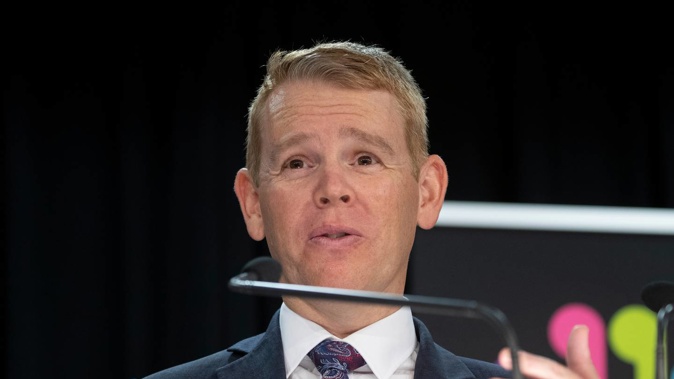
Education Minister Chris Hipkins has announced a $88 million package to tackle school attendance issues, particularly due to Covid-19 impacts.
Hipkins said the funding, to be part of Budget 2022, would focus on supporting initiatives that work for local communities to deal with engagement and attendance.
A regional response fund of $40 million over four years was being established to meet local education needs.
The package includes $11.2 million for a positive behaviour and learning programme and $7.75 million specifically for Māori and Pasifika communities, where there are large discrepancies.
Hipkins and Associate Education Minister Jan Tinetti made the announcement at Porirua College today.
Data for term 2 of last year shows over 40 per cent of students not going to school regularly – attending 90 per cent of the time by half days – an increase of 10 percentage points since 2015, with huge disparities for Māori and Pacific children and lower-income households.
Data also shows children disconnected from the school system are taking longer to get back in the classroom.
Since 2017 the average number of days it took to re-engage non-enrolled students increased from 85.6 to 113.9 last year.
It also showed the 20 longest times had all increased substantially since 2015, the peak year for regular attendance over the past decade, from 741 days to 1914 days in 2021.
There had been a steady increase in non-enrolled students since 2015, from 7223 to 9076 in 2017 and 10141 in 2021 (this was a small decrease from 2020, largely affected by lockdowns).
It comes as the latest data for regular attendance, for term 2 last year, remains about 60 per cent - a 10 percentage point drop from 2015, and similar to 2019.
Ministry of Education research shows each additional half-day of absence is associated with a reduction in the number of NCEA credits students subsequently attain.
Last year Parliament's education committee launched an inquiry into truancy issues, and published its final report in March.
It came after the Herald revealed Government-funded truancy services were so poorly resourced more than 30,000 students who missed at least three days of school a fortnight were out of reach.
Those service providers contracted by the Ministry of Education received about $9.7 million annually, enough to reach about 22,000 students. Budget 2021 allocated a further $21m over four years covering an extra 7500 students.
The inquiry found steadily declining regular attendance rates – attending 90 per cent of the time by half days – since 2015, from 69.5 per cent to 59.7 per cent in 2021 for term 2 of each year.
The inquiry found attendance levels for New Zealand students far lower than in Australia, Canada, Ireland, the United Kingdom, and the United States.
A 2018 international survey found 29 per cent of students here reported skipping school on at least one day, compared with the OECD average of 21 per cent.
In Aotearoa, Māori and Pacific children saw the greatest declines in regular attendance since 2015, of 12.3 and 15.8 per cent respectively, versus 10 per cent for Pākehā and 7.7 per cent for Asian students.
In term 2 of 2021, 44.4 per cent of Māori and 44.8 per cent of Pacific students attended school regularly.
While there were declines across all deciles, regular attendance among the poorest students, decile one, declined nearly 17 percentage points since 2015 to 40.9 per cent, while those in decile 10 dropped just over five points to 71.7 per cent.
There had also been a steady increase in students chronically absent (attending 70 per cent or less of available school days) from 4.6 per cent in 2015 to a peak of 8.7 per cent in 2020, and down to 7.7 per cent last year.
- by Michael Neilson, NZ Herald
Take your Radio, Podcasts and Music with you









